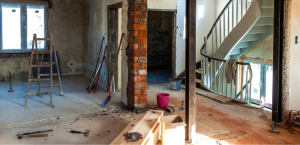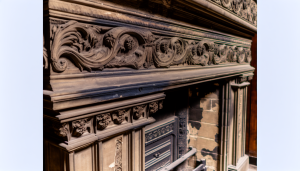Is heritage designation worth the trouble?
By Johanne Yakula
Nothing is more gratifying to old home lovers than a drive through a neighbourhood filled with well-preserved heritage homes. Beautifully restored to their former elegance, these buildings are the result of many dollars spent and hours worked. It is only natural for the owners of these building to want their efforts recognized and their buildings preserved for future generations. Legal historic designation is the only way to ensure this happens, but the process of designation is fraught with bureaucratic dealings and hurdles. So, is it worth the trouble?
Pros
Historic designation differs from province to province. For example, in Markham, Ontario, a town renowned for its stock of mid-19th-century buildings, any structure that predates 1930 is automatically added to the municipal heritage inventory. Although not necessarily candidates for designation, the properties are “flagged” as being of possible value to the community. The process of determining this is triggered by an application to alter, demolish, rezone — anything viewed as potentially damaging to the building. The town then evaluates its architectural, cultural or historical significance to determine what level of protection to award the building. Markham boasts more than 200 “on title” designated properties and three conservation districts.
Markham takes preservation very seriously; its policies regarding appropriate materials, work and standards are strict and non-voluntary. So why willingly put yourself through this potential bureaucratic nightmare if you can opt out? According to George Duncan, senior heritage and conservation planner for the Town of Markham, the benefits outweigh the drawbacks.
“Designation is the recognition of the cultural heritage value of our historic buildings. It means to ensure that this legacy will endure for future generations.” There are immediate benefits as well. “There is a definite cachet in being part of the historic community,” adds Duncan. “And because of this, heritage homes are often in superior physical condition. This is evident in resale values.”
In exchange for designation and entering into a maintenance agreement with the Town of Markham, owners are eligible for a 30 per cent reduction in municipal and school taxes. They have the right to appeal the maintenance agreement but, except in very rare cases, the town’s conservation review board upholds the decision.
Cons
In resource-rich Alberta, where historic designation is owner-initiated, the carrot is cash. Any buildings that are on the Register of Historic Resources in Edmonton are eligible for designation. The historic resources review panel evaluates applications but the final approval comes from city council.
Once legally designated, the homeowner can access funds up to $25,000 every five years to help with restoration. Commercial building owners are eligible for up to 50 per cent of the full cost of restoring the exterior character defining elements. To sweeten the pot, both can access matching funds from the Province of Alberta if they designate their home provincially.
With all these incentives in place, why would a heritage-building owner not want to have his building designated? “For one thing, it’s more expensive,” says Robert Geldart, principal heritage planner for the City of Edmonton. “It requires more effort. Owners must understand that they need to repair first, and if that’s not possible they must replace in kind.” It requires research, an intimate knowledge of your project and help from the right tradespeople. Alberta’s booming economy and subsequent labour shortage make the last item especially challenging.
Dealing with the bureaucracy takes patience and long-term planning — nothing happens quickly and many people just don’t want to wait, admits Geldart.
Ryan Catena, a 26-year-old Edmontonian, is wholeheartedly involved in restoring his newly designated miner’s house. When asked why he applied for designation he replied, “The uniqueness and character of a heritage home is priceless. Preserving heritage buildings brings a community closer together. I have had the pride and enjoyment of bringing a piece of our city’s history that had been neglected for a long time back to life. My dream for this house is now a reality.” Perhaps when all is said and done, this is the most compelling reason of all.







